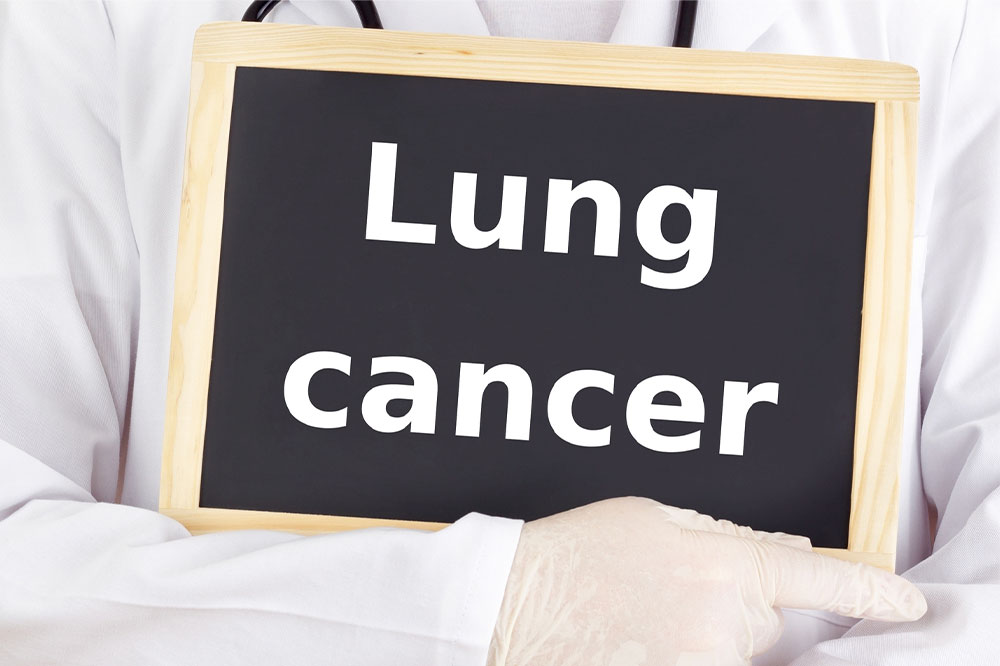Lung Cancer Symptoms, Causes, and Remedies

Lung cancer is caused by the development of malignant cells in a person’s lungs. The cancerous cells can also spread to the lymph nodes and other parts of the body. The condition is common across the country, and results in approximately 130,180 fatalities every year. There are two primary types of lung cancer, known as small cell cancer and non-small cell cancer. Here are some more key details about the condition:
Lung cancer symptoms
Lung cancer can be addressed more efficiently if it is diagnosed in its early stages. Various symptoms may indicate the presence of this condition in patients, such as:
Chronic cough
If a person has a cough that does not reduce or go away after 2 to 3 weeks and just keeps getting worse, it may be a sign of lung cancer. However, apart from chronic cough, people with this condition can also develop recurrent pneumonia, bronchitis, and similar other lung conditions.
Chest pain
The aggressive growth of cells in and around the lungs results in a series of blockages in that area. As the tumor develops, it causes tightness in a person’s chest and puts pressure on their nerves. This results in prolonged chest pain, especially during coughing, breathing deeply, or laughing.
Constant fatigue
Lung cancer prevents a person from breathing normally. Normally, people living with this condition find it hard to inhale and exhale long breaths. Due to the malignant blockages in their lungs, they can only take short breaths every now and then. Thus, such persons do not have the energy to do the simplest of tasks, such as sprinting a few paces, without getting fatigued.
Wheezing
The shortness of breath is accompanied by frequent wheezing, as the tumor in the lungs leads to a strain in the passage of fresh air.
Loss of appetite
Lung cancer brings about symptoms such as difficulty in swallowing food, feeling depressed, being breathless, feeling fatigued, and experiencing chest pain. As a result of these physical and mental factors, a person with lung cancer shows a drastic reduction in appetite.
Coughing up blood
Lung cancer causes bleeding in the airways of an individual. As a result, people with this condition may frequently cough up blood (a condition known as hemoptysis).
Lung cancer causes
Although there are a plethora of causes of lung cancer, certain things have been found to trigger the condition more frequently than others. Some such factors include:
Heredity
Researchers have frequently found the genetic makeup of an individual to be one of the major causes of lung cancer. If a person has a family history of lung cancer, they have a higher chance of developing the condition. So, if an individual’s father or other relatives have had lung cancer (or any other type of cancer), then they will need to screen themselves on a regular basis for the condition.
Exposure to particle pollution
Particle pollution, or the pollution caused by small solid and liquid particles in the air, is a major risk factor for lung cancer and other respiratory ailments. These particles are present in the fumes coming out from a vehicle’s exhaust pipes, household chimneys, emissions from factories, and other similar sources. If a person breathes in such particles on a regular basis, then they are likely to become vulnerable to lung cancer.
Radon inhalation
Radon is an odorless, colorless radioactive gas. Due to its commonly occurring nature (about 1 in 15 homes in the country are exposed to the gas), radon is a known cause of lung cancer. This gas exists naturally in soil and enters homes and buildings through small cracks and gaps.
Exposure to hazardous chemicals
Hazardous chemicals include uranium, asbestos, chromium, cadmium, arsenic, nickel, and some petroleum products. These chemicals are heavily used in various industrial operations. So, people who are frequently exposed to such chemicals due to their occupation, residential location, or other reasons, are likelier than others to develop lung cancer over the long term.
Lung cancer remedies
Treating lung cancer once it advances past its early stages is nearly impossible. In various stages, healthcare professionals can use the following treatment alternatives to address lung cancer in people:
Surgery
This is one of the most common treatment avenues to treat lung cancer. In this option, doctors surgically cut out the tumor, and several cells and tissue in the vicinity of the tumor are removed too. While this is an effective remedy for lung cancer, it does not eliminate the chance of a relapse. Patients can face the recurrence of cancer cells in the lungs or other body parts.
Chemotherapy
In chemotherapy, doctors use specific remedies and treatment combinations to treat early-stage lung cancer. They seek to inhibit the growth of cancerous cells in a person’s lungs and eliminate existing cancerous cells.
Radiation therapy
Radiation therapy, also commonly known as radiotherapy, is a powerful and effective way to aggressively destroy cancer cells in a person’s lungs. Powerful radiation pulses are used to destroy cancer cells and tissues. However, it is not ideal for every patient. Therefore, an intensive course of radiotherapy (called radical radiotherapy), is used against non-small-cell lung cancer if a person is not strong or healthy enough for a full-blown radiotherapy session.
Targeted therapy
Targeted therapy, also called precision therapy or personalized therapy, involves doctors identifying specific molecular targets that respond to this treatment. Upon identification, such targets are exposed to specific treatment options to thwart the growth of cancerous cells.
Immunotherapy
The procedure involves using the patient’s immunity to destroy lung cancer cells. In immunotherapy, doctors use specific treatment combinations to activate a person’s immune system and responses and, by extension, destroy their lung cancer cells.






